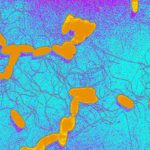Lien vers Pubmed [PMID] – 24193324
J Vis Exp 2013 Oct;(80):e50296
Macrophages are key-cells in the initiation, the development and the regulation of the inflammatory response to bacterial infection. Macrophages are intensively and increasingly recruited in septic joints from the early phases of infection and the infiltration is supposed to regress once efficient removal of the pathogens is obtained. The ability to identify in vivo macrophage activity in an infected joint can therefore provide two main applications: early detection of acute synovitis and monitoring of therapy. In vivo noninvasive detection of macrophages can be performed with magnetic resonance imaging using iron nanoparticles such as ultrasmall superparamagnetic iron oxide (USPIO). After intravascular or intraarticular administration, USPIO are specifically phagocytized by activated macrophages, and, due to their magnetic properties, induce signal changes in tissues presenting macrophage infiltration. A quantitative evaluation of the infiltrate is feasible, as the area with signal loss (number of dark pixels) observed on gradient echo MR images after particles injection is correlated with the amount of iron within the tissue and therefore reflects the number of USPIO-loaded cells. We present here a protocol to perform macrophage imaging using USPIO-enhanced MR imaging in an animal model of septic arthritis, allowing an initial and longitudinal in vivo noninvasive evaluation of macrophages infiltration and an assessment of therapy action.

